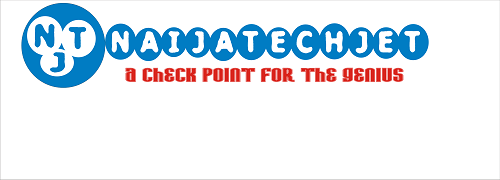WordPress itself is the target of an array of automated attacks. Bots are attempting brute-force logins, script and database injections, together with a large number of different malicious activities. However, while stopping bot attacks is vital, they’re far from the one threat that needs to be handled.
Certainly, there are different bases we have to cover. Beyond automated threats, changing human behavior could also be an even more vital step in securing a WordPress web site. With that in mind, listed below are 5 things we can do right now to enhance safety.
The problem we run into as web designers is that, whereas it’s simple sufficient to add SSL to a WordPress web site, we aren’t always the decision-makers in terms of shopping for a certificates. In these instances, we've now to advocate for SSL and educate shoppers as to why it should no longer be considered elective.
If we’re lucky, our web host offers entry to free certificates by means of a service like Let’s Encrypt. If not, then it’s as much as us to advertising and marketing campaign for, on the very least, a low-cost different.
Comments must be the most important wrongdoer right here. Not all web sites should have them enabled and individuals who do should be using some heavy spam security. If the location you’re setting up doesn’t need this function, use the Dialogue settings inside WordPress to disable it.
Past that, take a look at completely different choices that you could be not be utilizing, such because the REST API, Gravatars and XML-RPC as potential objects to shut off.
The steps above all seem to have one widespread thread – being proactive. By sharing data, researching the background of the software program we use and implementing secure practices sooner than an issue arises, we're utilizing a security-first mindset. Whereas that received’t enable us to stop each conceivable menace, it places us in the very best place for the battle
Certainly, there are different bases we have to cover. Beyond automated threats, changing human behavior could also be an even more vital step in securing a WordPress web site. With that in mind, listed below are 5 things we can do right now to enhance safety.
1. Train Users in Best Practices
Part of a developer’s job description usually consists of training clients. However while we tend to deal with the basics of managing content, this is additionally a prime opportunity to speak about security. I do know, it sounds like a potentially sophisticated discussion – but it doesn’t have to be.
What users really want to know are the fundamentals of being safe on-line. This implies:
However once you’ve determined to make use of a plugin, that doesn’t guarantee smooth sailing from here on out. Reasonably, consider each plugin you install as its personal ongoing maintenance issue. Plugins can become outdated or deserted as authors no longer have the time or interest in maintaining them. We’ve also seen where plugins have been unwittingly sold to those with malicious intent.
To help fight these potentialities, it’s worthwhile to stay on top of things. Which means knowing which plugins you’re using, staying informed on new versions and generally being attentive to WordPress-related news.
Lastly, take a while to routinely audit the sites you maintain. One simple way to reduce danger is to simply delete any plugins that aren’t active or no longer needed. This in itself will help minimize potential issues.
As an example, most of these plugins can restrict failed login makes an attempt, stop malicious code from being executed and give you a warning when you've gotten outdated software program. Premium variations add goodies like country-blocking and two-factor authentication.
The worth of those plugins is that they deal with widespread threats by each bots and people. They obtain make your website 100% bulletproof, however they supply an extra layer of security. Extra essential is that they may offer you actionable information which will result in a safer website.
- Utilizing complicated passwords which can be hard to crack.
- Provide back-end access to solely those who need it.
- Keep core software, plugins and themes up-to-date (if it’s their responsibility to do so).
- Don’t set up plugins without weighing need against risk.
- Better yet, leave plugin decisions to the professionals.
2. Select Plugins Carefully and Stay Vigilant
In case you spend enough time designing WordPress websites, you’ll discover that not all plugins are created equally. Because anybody can (conceivably, at the very least) write a plugin, high quality can vary significantly. So it’s necessary to do a little bit of studying prior to installing a plugin. Check out how often it’s updated, look at support forums and, if available, utilization numbers. This will provide you with at least some idea of how well it all works.However once you’ve determined to make use of a plugin, that doesn’t guarantee smooth sailing from here on out. Reasonably, consider each plugin you install as its personal ongoing maintenance issue. Plugins can become outdated or deserted as authors no longer have the time or interest in maintaining them. We’ve also seen where plugins have been unwittingly sold to those with malicious intent.
To help fight these potentialities, it’s worthwhile to stay on top of things. Which means knowing which plugins you’re using, staying informed on new versions and generally being attentive to WordPress-related news.
Lastly, take a while to routinely audit the sites you maintain. One simple way to reduce danger is to simply delete any plugins that aren’t active or no longer needed. This in itself will help minimize potential issues.
4. Make use of a Serving to Hand
We folks can’t monitor our websites every minute of day-after-day. Nonetheless there are instruments obtainable that may keep a watchful eye, 24/7. Safety plugins reminiscent of Wordfence or iThemes Security are good choices, as they search for suspicious code and conduct.As an example, most of these plugins can restrict failed login makes an attempt, stop malicious code from being executed and give you a warning when you've gotten outdated software program. Premium variations add goodies like country-blocking and two-factor authentication.
The worth of those plugins is that they deal with widespread threats by each bots and people. They obtain make your website 100% bulletproof, however they supply an extra layer of security. Extra essential is that they may offer you actionable information which will result in a safer website.
3. Take advantage of SSL
In the past, SSL was just for ecommerce websites or individuals who handled delicate information. In the present day, it’s grow to be the standard. Recently, each browsers and search engines like google have thought it’s importantly adequate to warn customers about websites that also run over http.The problem we run into as web designers is that, whereas it’s simple sufficient to add SSL to a WordPress web site, we aren’t always the decision-makers in terms of shopping for a certificates. In these instances, we've now to advocate for SSL and educate shoppers as to why it should no longer be considered elective.
If we’re lucky, our web host offers entry to free certificates by means of a service like Let’s Encrypt. If not, then it’s as much as us to advertising and marketing campaign for, on the very least, a low-cost different.
5. Flip Off Unneeded Performance
A contemporary set up of WordPress comes with various built-in performance. Nonetheless there’s an excellent likelihood that you just simply received't be using each single function. Because of this truth, it's pointless to turned them on.Comments must be the most important wrongdoer right here. Not all web sites should have them enabled and individuals who do should be using some heavy spam security. If the location you’re setting up doesn’t need this function, use the Dialogue settings inside WordPress to disable it.
Past that, take a look at completely different choices that you could be not be utilizing, such because the REST API, Gravatars and XML-RPC as potential objects to shut off.
A Menace to Our Personal Safety
Possibly the most important menace to a WordPress website security is not any specific automated assault, however our private conduct. So by altering our actions, we are going to make our web sites that quite more troublesome to compromise.The steps above all seem to have one widespread thread – being proactive. By sharing data, researching the background of the software program we use and implementing secure practices sooner than an issue arises, we're utilizing a security-first mindset. Whereas that received’t enable us to stop each conceivable menace, it places us in the very best place for the battle





















